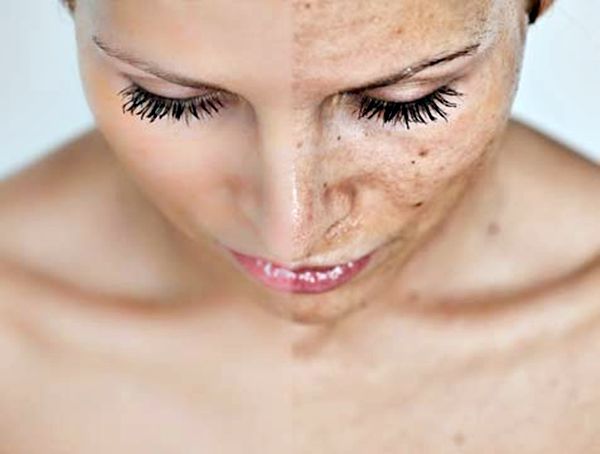
The skin pigmentation of Melasma is also known as Chloasma. It is a dermatological condition that can be recognized by appearance of pigmentation patches on the face. It is commonly referred to as pregnancy mask as it is also caused due to hormonal change during pregnancy. The causes of Melasma still remains undetermined, although a connection can be seen between the condition and the hormonal changes of a body. The pigment producing cells get induced under the ultraviolet rays of the sun. Hence, exposure to the UVA rays of the sun should be avoided. Consuming certain drugs can also stimulate the skin condition while taken under the sun.
How does Melasma develop?
45 to 50 million people in the world are effected by the disease melasma, where 90% of the cases are women. The cause of melasma is still undetermined by experts. There can be various factors which forms the dark patches in the skin in melasma. The factors of dark pigmentation may include family history of the disease, intake of birth control pills, pregnancy, certain sensitive medications, cosmetics combined with the exposure to UV rays of the sun. Research says that the development of melasma is much common in the summer months because of the intense sun rays. Moreover some products or treatments may also cause skin irritation which triggers in the production of melaninand shows up symptoms of melasma.
Occurrence of melasma is calles the mask of pregnancy. Melasma can be seen in pregnant women as their hormone levels tend to change during the period of pregnancy. It has also been proved that women who undergoes the therapy of progesterone hormone replacement post menopause has more tendency to develop melasma.
Causes and risk factors
Some of the causes of melasma can turn into the risk factors in developing the disease. Some of the risk factors are as follows:
1. Genetic Predisposition: This is one of the major component in the development of melasma. Melasma can be found more in women than in men. Most of the people who suffers from melasma has a record of skin discoloration in the history of their family.
2. Sun Exposure: Sun exposure is a predominant risk factor in trigerring melasma. The ultraviolet rays of the sun or even strong light from the light bulbs, can spark off the melanocytes or the pigment producing cells in the skin. People with darker skin color is more likely to have melasma than those with lighter skin color.
3. Hormonal Changes: Hormonal imbalance is also a factor for developing melasma. It can be seen during pregnancy which is also known as the mask of pregnancy. Signs of the mask of pregnancy can be seen in maximum of the pregnant women. Hormone levels are usually increased during the time of pregnancy which stimulates the progesterone, estrogen and melanocyte. Melasma can also be caused due to consumption of birth control pills.
4. Medications: Some medications and cosmetics can be sensitive to certain skin and can cause melasma in few people. Certain medications can also cause side effects and trigger melasma.
5. Thyroid Dysfunction: Thyroid dysfunction is also considered to be one of the risk factors of melasma. A research study says that person suffering from melasma has an increased chance of thyroid disease.
7. Idiopathic: Melasma may affect men or women with none of the above known risk factors.
Signs and Symptoms
The signs of melasma can be seen through the darkening of the skin which occurs on both sides of the face symmetrically. The dark patches in the skin are not regular in shape and are more prone to develop on areas such as forehead, cheeks, upper lip, chin which can gradually extend to the neck and shoulders too. This pigmentation style can be differentiated into three possible patterns mainly in the center of the face known as centrofacial, in the cheekbones known as malar and in the jaw areas known as mandibular.
The dark color of the pigmentation can occur from light brown to dark brown or sometimes black, and even a bluish black color. If highly exposed to the sun, the affected areas may cause skin irritation periodically. There are three different types of melasma depending on the affected layers of the skin.
Epidermal melasma is the pigmentation which occurs in the epidermis layer of the skin. It is the type where the patches are dark brown and the borders are defined. Dermal melasma is the pigmentation which occurs in the deeper layer of the skin. It is the type where the patches are light brown and the borders are poorly defined. Mixed melasma is the combination of both light and dark patches of pigmentation.


